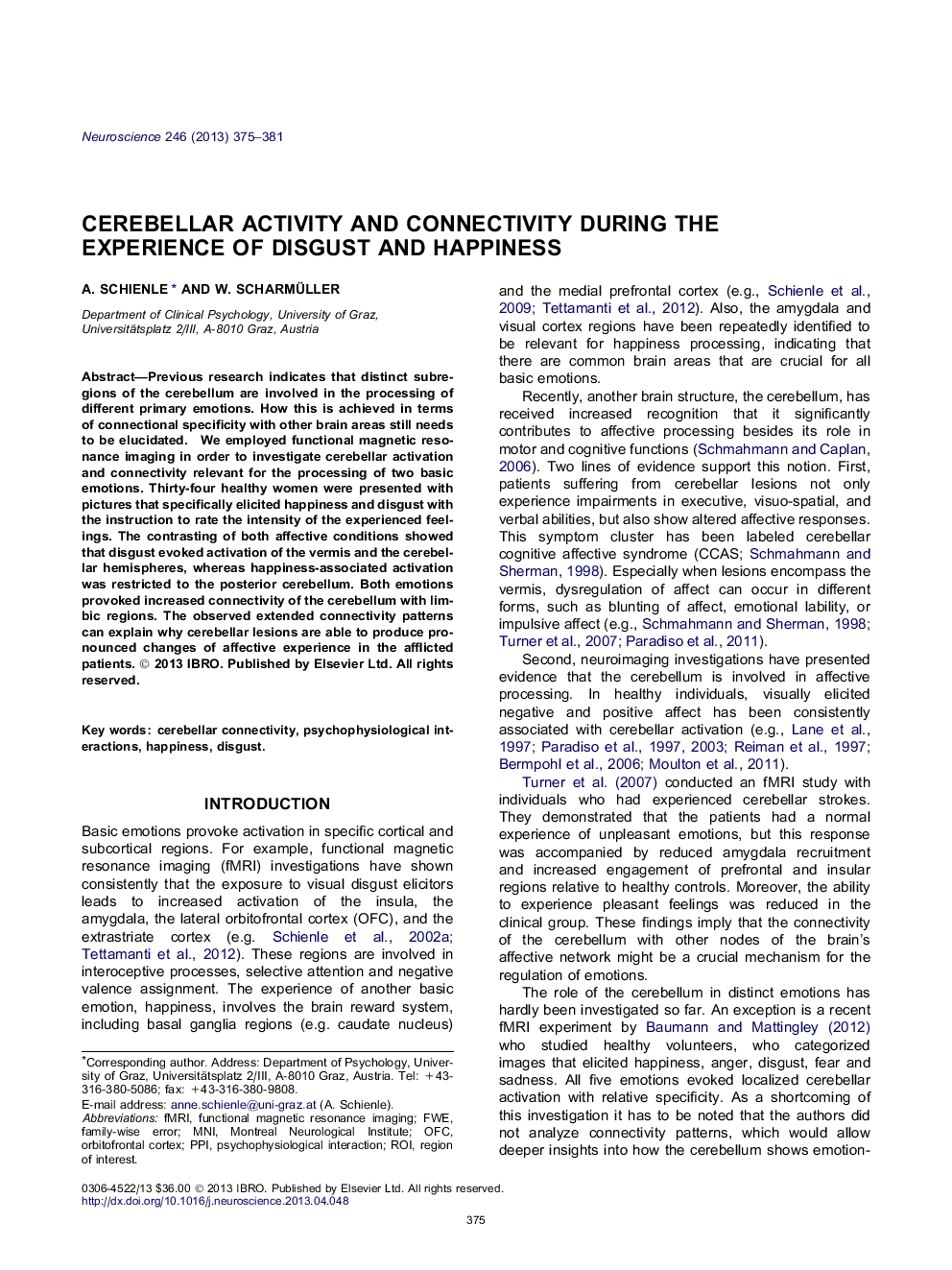| Article ID | Journal | Published Year | Pages | File Type |
|---|---|---|---|---|
| 6274606 | Neuroscience | 2013 | 7 Pages |
Abstract
We employed functional magnetic resonance imaging in order to investigate cerebellar activation and connectivity relevant for the processing of two basic emotions. Thirty-four healthy women were presented with pictures that specifically elicited happiness and disgust with the instruction to rate the intensity of the experienced feelings. The contrasting of both affective conditions showed that disgust evoked activation of the vermis and the cerebellar hemispheres, whereas happiness-associated activation was restricted to the posterior cerebellum. Both emotions provoked increased connectivity of the cerebellum with limbic regions. The observed extended connectivity patterns can explain why cerebellar lesions are able to produce pronounced changes of affective experience in the afflicted patients.
Keywords
Related Topics
Life Sciences
Neuroscience
Neuroscience (General)
Authors
A. Schienle, W. Scharmüller,
